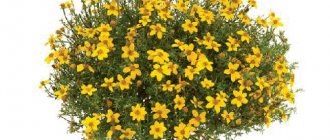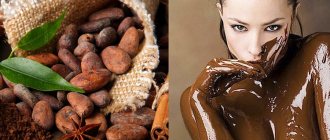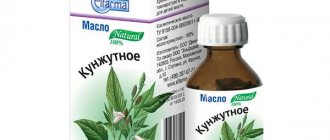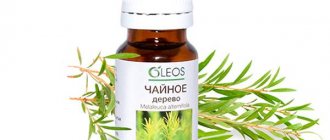According to the myths of Ancient Greece, there was a certain nymph Mint, who was turned into a bush by the goddess Persephone for seducing her husband Hades. The ancient Greeks already knew about the healing properties of mint and widely used it in various areas of their lives. Doctors and scientists of that era - Avicenna, Hippocrates - spoke in their works about the wonderful properties of mint. It became widespread in Europe only in the 18th century.
Recipes for the face
In cosmetic procedures, mint ether can be added to any tonic, mask or cream in an amount of 1 to 3 drops.
Masks for normal skin care
- 1 tbsp. blue clay is diluted with warm water to the consistency of sour cream. 1 tbsp is also added here. almond oil mixed with 2 drops of mint essential oil (EO). The product is applied to clean skin for 15 minutes, washed off with warm water.
- 1 tbsp. peach oil, 1 tsp. honey, 1 drop of EM mint and 1 egg yolk are mixed and applied to the skin for 10 minutes. At the end of the procedure, the product is washed off with warm water.
Products for oily skin with a cleansing and refreshing effect
- Film mask with peeling effect. Soak 1 tbsp in a small amount of water. edible gelatin, melt in a water bath and mix with an activated carbon tablet crushed to a powder state and 1 drop of mint oil. The mask is applied to the face in several layers, left until completely dry and removed entirely as a film.
- Homemade cream. 30 mg of jojoba base oil is mixed with the EO composition (2 drops each of lavender, peppermint, orange oil). The product is applied to the skin once a day.
- Refreshing tonic. Add 2 drops of mint and lavender essential oils to a glass of any mineral water. We spray our face with the resulting solution from a spray bottle several times a day.
Care for dry and sensitive skin
- As a night cream for dry, irritation-prone skin, you can use a composition of string or calendula oil with the addition of peppermint essential oil. For each tablespoon of base product, it is enough to take 1 drop of essential composition.
- Nourishing mask. Mix 1 tbsp. honey and sour cream, add 1 drop of mint and lavender oil to the finished mixture. Keep the mixture on your face for no longer than 15 minutes.
Recipes for combination skin
- Refreshing tonic. To 1 tbsp. grape seed oil, add 1-2 drops of mint essential oil. We wipe our face with the product during the day or use it at night. You can also use natural baby oil with medicinal herbs as a base.
- Mask. Dilute 15 grams of blue clay with mineral water and add 1 drop each of lavender essential oil, clary sage and mint to the mixture. Apply the mask to the entire face, except for the area around the eyes, and leave for no longer than 15 minutes.
Lip care
To get rid of the initial stages of herpes, cracks and wounds on the lips, you can wipe them with a mixture of 1 drop of peppermint oil and 1 tbsp. one of the following oils:
- olive;
- almond;
- peach;
- sea buckthorn
Getting rid of acne and post-acne
Due to its pronounced restorative effect, the ether has found use in healing ointments in an amount of 1-2 drops. The basis for such ointments can be sea buckthorn oil or aloe juice.
Anti-acne products
- Mint cream. Mix 2 tbsp. jojoba oil and 2 drops of mint oil. The product can be applied to problem areas 2 times a day.
- Caring tonic. To 1 tbsp. calendula oil or string add 2 drops of mint essential oil. Wipe acne areas with the resulting product.
Anti-wrinkle masks
Add 2 drops of essential mint to the following components
- 3 tbsp. oatmeal porridge boiled in water. Apply the product to the face and neck twice a week. The effect will be given by a course of 10-12 procedures.
- 1 tbsp. mix homemade sour cream with 1 egg white, 1 tsp. fresh berry or fruit juice.
- Sea buckthorn oil and honey mixed in proportions 2:1.
Remedies for age spots
To lighten the skin, you can use formulations with the addition of lemon or grapefruit juice, chopped parsley leaves, and cucumber. Any of the proposed components is mixed with 1 tbsp. sour cream or olive oil, and a couple of drops of mint ether are added to the finished mixture.
The use of steam baths
Before peeling or applying masks, it is advisable to steam your face over a steam bath with the addition of a decoction of chamomile and calendula, as well as a couple of drops of essential oil.
Cosmetic ice
The following recipe provides an excellent refreshing and rejuvenating effect. Dissolve 1 tsp in 1 glass of warm water. honey and 2 drops of mint oil. Pour the resulting mixture into molds. We wipe our face with prepared ice twice a day.
The benefits of mint and essential oil
Peppermint essential oil
Peppermint oil is produced from the aerial parts of the plant, mainly the leaves. The oil is yellow or green in color and has a liquid consistency. It is obtained by steam distillation. The oil has a pronounced menthol smell. Mint contains about 50% of it. It contains limonene, thymol, terpinene - substances that have antifungal and antiseptic properties.
Everyone knows the fragrant, wonderful smell of this plant. A cup of wonderful aromatic tea with mint leaves in the morning helps you wake up, and in the evening helps you calm down and relax.
Essential oil is known as an excellent cosmetic product. It is indispensable in facial skin care. Masks made from it help to brighten and even out the complexion and remove age spots. It has a calming effect on the skin and relieves all kinds of irritations. The oil fights fine wrinkles and prevents the appearance of new ones. It protects against fungal diseases and herpes.
The result of fighting acne with the help of mint essential oil is very effective and efficient. It is especially worth highlighting its use together with lavender oil.
The oil is suitable for different skin types, almost does not cause allergic reactions, and does not clog pores.
Reviews
Most often, the oil is used to enrich and flavor finished cosmetics, soften the skin of the lips (with a mixture of grape seed oil and mint), and also for the purpose of aromatizing rooms. Thanks to the rich fresh aroma, masks and creams acquire a noticeable refreshing and tonic effect.
You shouldn't expect miracles from peppermint oil, but the addition of this component makes all facial care procedures more enjoyable and effective.
Oils for facial care, application rules, why pores become clogged:
How to use peppermint oil for women depending on skin type
Applying peppermint oil
Oily (combination) skin type
Pimples and other places with inflammation on the face are burned with oil, applying it to the affected areas with a cotton swab. Cauterization is repeated several times. Next, this operation is carried out 1 time. Treatment lasts one week. Adding essential oil to any cream or gel is a great solution to the problem. The cream is applied to the face at night. This helps eliminate acne in a relatively quick time. In addition, skin tone will improve and pores will narrow.
Dry skin type
It is not recommended to use the oil in its pure form. It is better to use it in combination with honey, you can dilute it in egg yolk. Or use the juice of ripe berries for this purpose.
Where is the best place to buy
You can purchase peppermint essential oil at a pharmacy or natural cosmetics store; you can also place orders online. Sold in a dark glass bottle with a dropper dispenser with a volume of 5.10 ml.
Egyptian oil Kausar 125 ml can be purchased for 550 rubles. The price of 10 ml of domestic brands is from 45 to 80 rubles.
Can be stored at room temperature from 18° to 25°, in a place protected from direct sunlight for 2 years. The oil is not stable, so you can distinguish a spoiled product by changes in color, consistency, aroma; it becomes thick and dark.
Contraindications
Of course, like any other cosmetic product, not everyone can use mint oil. It is contraindicated in the following cases: pregnancy and breastfeeding; for people suffering from hypotension (low blood pressure). Do not allow peppermint oil to get into your eyes. It is not recommended for small children either.
It is considered acceptable when, after procedures with oil, there is a tingling sensation, a feeling of coldness at the application site, or if slight redness of the skin appears.
Ingestion
The oil is used to flavor ready-made dishes, sauces, and tea. For medicinal purposes it is used to restore digestive processes and accelerate metabolism. To prepare a healing remedy, 7–10 drops are added to 50 g of base, this can be honey, jam, unrefined vegetable oil.
You need to take half a teaspoon in the morning and evening, the course of treatment lasts no more than 2 weeks. Before starting home therapy, you need to consult a doctor and possibly undergo an examination.
In case of an overdose, irritation of the mucous membrane, headache, migraine, sleep disturbance, and decreased blood pressure are possible. Contraindications include individual intolerance, as well as the use of homeopathic medications.
When is it forbidden to use mint?
Since mint is a medicinal plant, it can cause various unwanted reactions. In this regard, patients who suffer from hypertension should use mint-based products with care. Precautionary measures also apply to pregnant and lactating patients. The plant has a calming effect, so it should be used with caution in cases where a person is taking medications that cause drowsiness. In addition, people who have allergic reactions to the components included in various mixtures should not resort to mint-based cosmetics.
How is it useful?
Mint contains ascorbic acid, essential oil, arginine, organic acids and menthol. Thanks to these components, the plant has the following beneficial properties:
- has anti-inflammatory, analgesic and antiseptic effects;
- cleanses and soothes the skin;
- makes the skin elastic;
- improves blood circulation;
- normalizes the production of subcutaneous sebum;
- relieves pimples and blackheads;
- relieves redness;
- fights traces of rashes.
A little history
The name mint comes from Lat. "ment" meaning "thought". The unique properties of ether were known to the ancient Greeks and Romans. The beneficial properties of the medicinal plant were mentioned in their works by Hippocrates and Avicenna. In Ancient Egypt, dishes and wine were given characteristic fresh menthol-citrus notes, and aromatization with oil had a beneficial effect on digestion.
In ancient Greek mythology, Mint was one of the nymphs endowed with healing powers. According to legends, at the site of her death, fragrant grass with small purple inflorescences grew. Among the Romans, it was used by students of philosophers; wicker wreaths with mint were worn to concentrate attention and enhance mental abilities.
In Russia, beauties used fragrant herbs to take care of their appearance. We infused water with fresh leaves to cleanse the face and give a healthy, even tone. When added to vegetable oil, a real elixir of youth was obtained; the product transformed the skin and made it look younger.










